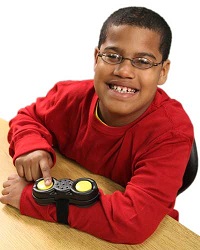Blog Roll: (Contributors)
» Hulet Smith, OT
» Megan Smith, PT
» Mike Price, OT
Topics:
Adaptive Devices
Adult Tricycles
Air Purifier
Allergy
Alternative Communication Devices
Alzheimer's Dementia Products
Aquatic Products
Arthritis Relief Products
Autism
Back Relief
Ball Pit/Pool
Bariatric
Bath Benches
Bathtub Lift
Bed Rails
Bedsores / Decubitus
Bidet
Body Solid Exercise Products
Breast Feeding Products
Bushel Trucks
Cancer
Catheters
CEU
Changing Bench
Child Car Seats
Child Care Products
Christmas Gifts
Clinic/Medical Equipment
Clinical Furniture
Cold and Flu
Communication Devices
Compression Garments
Computer Products
CPAP
Crutches
Daily Assistance Products
Daylight Lamps
Dental Care
Diabetes
Doctor's Office
Dysphagia
Electrodes
Electrolarynx
Emergency Preparedness
Ergonomic Equipment
Exam Tables
Exercise Products
Eyecare
Family Tricycles
First Aid Kits
Floor Scales
Fluidotherapy
Foot Drop
Foul Weather Gear
Furniture
Gait Trainers
General Articles
General Posts
Glassless Mirrors
Hand Sanitizer
Head Protection Helmets
Hearing Impaired
Heart Health
Heating Pad
Hip Fractures
Home Assistance Products
Home/Office Assistance
Hospital Beds
Hoyer Lifts
Hyperbaric chamber
Hyperthermia/Hypothermia
Ice/Hydration Carts
Impotence Products
Incontinence Products
Infection Control Gowns
Inspirational Stories
Lift Chairs
Light Therapy
Low Vision Products
Massage Tables & Chairs
Massage Units
Maternity
Medical Facility Products
Medical Scales
Multi-Sensory Environment
Natural Healing
Nebulizers
Non-Hospital Bedding
Nutritional Supplements
Office Furniture
One-Handed Products
Operating Room Devices
Ostomy Products
Oxygen Compressors
Oxygen Concentrator
Oxygen/Nebulizer Masks
Pain Relief
Paraffin Unit
Patient Lift
Patient Lifts
Patient Restraints
Patient Transfer Systems
Pediatric Bath Chairs
Pediatric Furniture
Pediatric Learning
Pediatric Recreation
Personal Listening Devices
Personal Warming Products
Physical Therapy
Pill Organizers
Pillows
Playground Equipment
Pool Lifts
Press Releases
Procedure Chairs
Pulse Oximeter
Reading Assistance
Reference Materials
Rehab Equipment
Rehabmart News
Rehabmart Newsletter
Respiratory Health
Rollators
Saunas
Scooters
Seniors
Shower Chairs
Shower Commode Chairs
Shower Gurney
Showers Chairs
Side Access Bathtubs
Skin Tear
Special Needs Dinnerware
Special Needs Seating
Special Report Articles
Splints
Sport Injuries
Standers
Staying Home
Stethoscopes
Stimulus Reward Toys
Stress Relief
Stroke
Strollers
Summertime Products and Summertime Fun
Talking Products
Therapy Balls
TheraTogs
Thermometers
Traction Devices & Tables
Treatment Tables
Ultrasound
Vibroacoustic Therapy
Vision Products
Walk-In Bathtub
Walking Aids
Walking Boot
Weighted Wearables
Wheelchair Accessories
Wheelchair Cushions
Wheelchair Lifts
Wheelchair Ramps
Wheelchair Transfer Systems
Wheelchairs
Women's Health
Work Hardening Products
Wound Care
Portable Communicators Help Special Needs Users Interact with Ease
For the majority of people, greeting friends or asking for a glass of water is a simple process. However, for people whose speech is impacted by developmental issues or neurological conditions such as strokes, letting others know their needs is a challenge at best and a nightmare at worst.
While picture boards which allow a user to point to an illustration of what they need have their place, they may be bulky and awkward to carry. If someone has limited manual dexterity, sign language may be out of the question. A more modern solution is a communicator, a device that can digitally record short messages such as greetings, alerting a need for a trip to the bathroom, or the desire for a snack or drink. Communicators are suitable for any person with special needs who can press a button. They can be used in classrooms, private or group homes, long-term care facilities, and with the portable models from Rehabmart, any place where social interaction is involved.

The Palm Com Assistive Technology Communicator has ten seconds of recording time. It is small enough to fit into a pocket, or it may be carried on a key ring or belt loop. A magnet allows it to be mounted onto a refrigerator. Messages are easily recorded or re-recorded. The Palm Com may be purchased individually or in sets of three.

Thanks to its Velcro straps, the Wearable Talker may be worn on an arm, a leg, or mounted to a wheelchair's armrest. Clear plastic lenses pop on and off the large yellow buttons to allow a helper to mount icons depicting a user's needs. Two messages may be recorded and the volume
is adjustable.
Even though it's only the size of a fanny pack, the Hip Talk Plus Communicator packs in a lot of features. Settings for three, six, or twelve icons can be adjusted with the touch of a couple of buttons. The icon frames are magnetic, allowing them to be changed easily. A contoured neoprene waist strap and carrying case allow the Hip Talk to be worn just like a fanny pack. It also has volume control, auditory cuing, and a sleep mode to preserve the batteries.
Want to feel like Dick Tracy did when he used his two-way radio wristwatch? You will if you use the Super Wrist Talker Communicator with its Velcro straps to hold it in place on your arm. It holds twelve levels of five-second messages activated by color-coded buttons.

To make a bold fashion statement, wear the Flip and Talk Assistive Technology Communicator around the waist. The user gives an icon holder with a picture representing a need or a greeting a gentle squeeze to play the message. The Flip and Talk holds up to 300 seconds of messages.
All of these communicators use AAA batteries and are easily cleaned by wiping them down with a gentle cleaning solution and a soft cloth or paper towel. They are not waterproof or submersible.
The new generation of communication devices not only help users let their needs be known in a clear and concise manner, but allow them to interact with the world around them in a more meaningful way. Thanks to the ease in message recording, they can greet people, tell simple short jokes, and interact with family pets or service dogs. The possibilities for connection are almost endless with communicators.
Fran Jablway,
Medical Consumer Writer
and
Hulet Smith, OT
Rehabmart Team Leader & CEO
